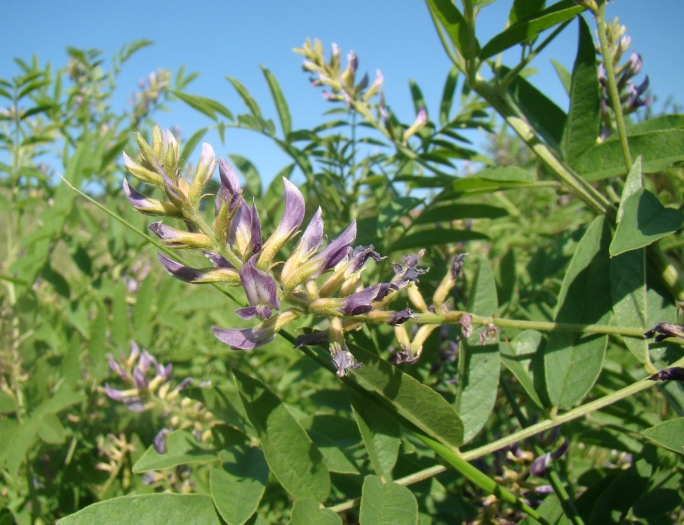Licorice
(Glycyrrhiza glabra)
Licorice (Glycyrrhiza glabra)
/
/

Юрий Данилевский (Yuriy Danilevsky)
CC BY 4.0






















































Estimated Native Range
Summary
Licorice is valued for its roots, which are harvested to extract the sweet flavoring used in various culinary applications, including candy and beverages. The plant is also known for its medicinal properties, particularly as a demulcent and expectorant. In cultivation, licorice requires full sun and well-drained soils, preferably in deep valleys. It is drought-tolerant once established and can thrive in soils with slow to medium drainage. While licorice is relatively easy to maintain, it can become invasive if not managed properly, spreading through its rhizomes. Gardeners should be aware of its potential to spread and take measures to contain it if necessary.CC BY-SA 4.0
Plant Description
- Plant Type: Subshrub, Herb
- Height: 3-4 feet
- Width: 2-3 feet
- Growth Rate: Moderate
- Flower Color: Purple, White
- Flowering Season: Summer
- Leaf Retention: Deciduous
Growth Requirements
- Sun: Full Sun
- Water: Medium
- Drainage: Slow, Medium
Common Uses
Edible*Disclaimer: Easyscape's listed plant edibility is for informational use. Always verify the safety and proper identification of any plant before consumption., Erosion Control, Showy Flowers
Natural Habitat
Native to various regions including the Mediterranean, parts of Asia, and southern Europe
Other Names
Common Names: Common Licorice, Cultivated Licorice, Liquorice, Licorice-Root, Biyan, Kahles Sussholz, Sussholz, Echtes Süßholz, Süßholz, Lakritze
Scientific Names: , Glycyrrhiza glabra, Glycyrrhiza echinata, Glycyrrhiza glabra var. glandulifera, Glycyrrhiza glandulifera, Glycyrrhiza glabra var. glabra, Glycyrrhiza brachycarpa, Glycyrrhiza glabra var. pubescens, Glycyrrhiza glabra var. asperula, Glycyrrhiza hirsuta
GBIF Accepted Name: Glycyrrhiza glabra L.